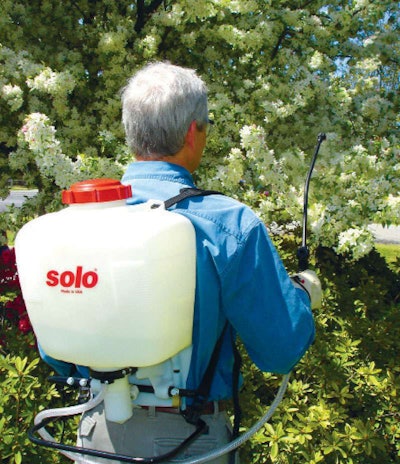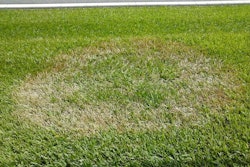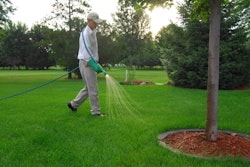
Proper storage can affect the longevity of your products and, more importantly, reduce the likelihood of poison exposure. If you don’t have a pesticide storage facility, consider these tips as you plan. If you do, take the opportunity to evaluate how well it stacks up to the guidelines already established by such regulatory bodies as the Environmental Protection Agency (EPA) and Occupational Safety and Health Administration (OSHA).
Location is key
When positioning your storage facility, find a spacious site not likely to flood or expose the chemicals to water. When possible, it should be at least 100 feet from surface water and downslope from wells and other sensitive factors like feed storage areas.
Depending on how much you store, your site should also minimize the potential for runoff into streams or other areas. This is necessary because, according to university and EPA studies, even small amounts of chemicals repeatedly dropped on the ground in the same location can build up over time and contaminate the soil, ground and surface water. If prevailing winds in your area come mostly from one direction, locate the storage downwind from dwellings as much as possible. Also consider using an area where you can restrict entry of unauthorized personnel.
Keep your storage area or facility as small as practical. This makes it harder for you to have more chemicals on site than you really need. Don’t stockpile. Reduce storage needs by buying only the amount of pesticide that you will need in the near future or during the current season when the pest is active.
On the inside
When storing pesticides, you must adequately separate chemicals that could cause a hazardous reaction if they are mixed. Each area must have a label according to the chemical category stored in it. Chemical storage areas must have enough ventilation to keep air contaminants low.
If you build a facility specifically for storage of restricted-use pesticides, try to use as much nonflammable material as possible. Floors and shelves should be nonabsorbent or have nonabsorbent coatings when you store restricted-use pesticides.
There must be enough natural or artificial light inside the storage area to allow workers to work safely. The rule requires at least 20 foot-candles of light. Control the temperature inside the facility so that your chemicals do not freeze and the conditions meet the storage recommendations of the manufacturer.
Pesticide storage areas should be on the ground floor. Within the storage area, separate pesticides by group (herbicides, insecticides, etc.) to prevent accidental misuse or contamination.
Install fire protection systems including alarms, sprinklers, extinguishers, etc., as needed. A floor plan showing the location and nature of the pesticides should be filed with the local fire department.
The storage building or area should be well marked with durable warning signs on all doors and windows, and should be kept locked.
Safe storage practices
The most important chemical storage rule is to follow any and all recommendations made by the chemicals’ manufacturers. These are usually found on the chemical container, label or material safety data sheet (MSDS). If the label, container or MSDS becomes illegible, you can get the information from your supplier, the manufacturer or on the internet. You can’t have unidentified chemicals without violating several government regulations and agencies.
Always store pesticides in their original containers, which includes the label listing ingredients, directions for use and first aid steps in case of accidental poisoning. Use common sense: Do not store chemicals in containers normally used for other purposes, like plastic milk jugs. Even if the container has the proper label, you are inviting disaster. And do not store pesticides with non-related equipment.
Store pesticides high enough so that they are out of reach of children and pets. If possible, keep all pesticides in a locked cabinet in a well-ventilated area. Never store pesticides in cabinets with or near food, animal feed or medical supplies.
Use child-resistant packaging correctly and close the container tightly after using the product. Child-resistant does not mean childproof, so you still must be extra careful to store properly – out of children’s reach – those products that are sold in child-resistant packaging.
Store flammable liquids far away from ignition sources such as your commercial vehicles or gas-powered lawn equipment.
If you can’t identify the contents of the container, or if you can’t tell how old the contents are, follow rules for safe disposal and get rid of it.
Never place pesticide containers in of front of windows. Exposure to sunlight may cause chemical breakdown or overheating. Pesticides generally should be stored at temperatures above 40 degrees Fahrenheit and below 90 degrees Fahrenheit. Humidity should be kept low to prevent lumping or degradation of powder formulations and to reduce corrosion of metal containers.
Store glass containers closest to the floor, and metal containers highest. This arrangement will help to prevent contamination by other materials from rusting or leaking containers and will reduce splash exposure from breakage of glass containers.
Sources: Environmental Protection Agency, Occupational Safety and Health Administration and Kansas State University











